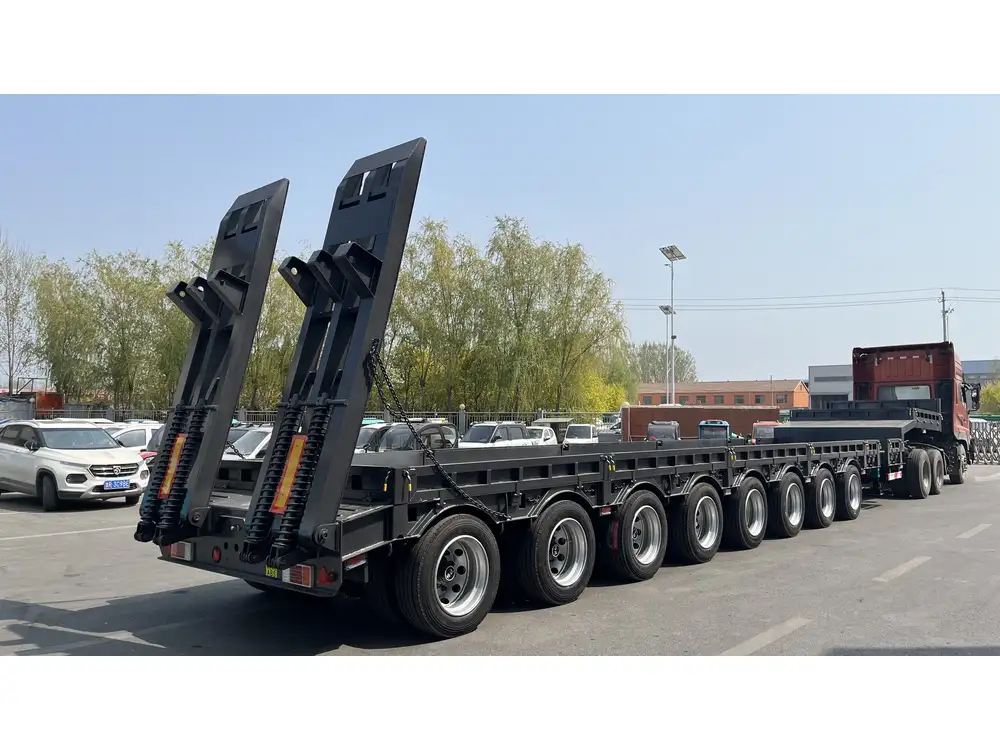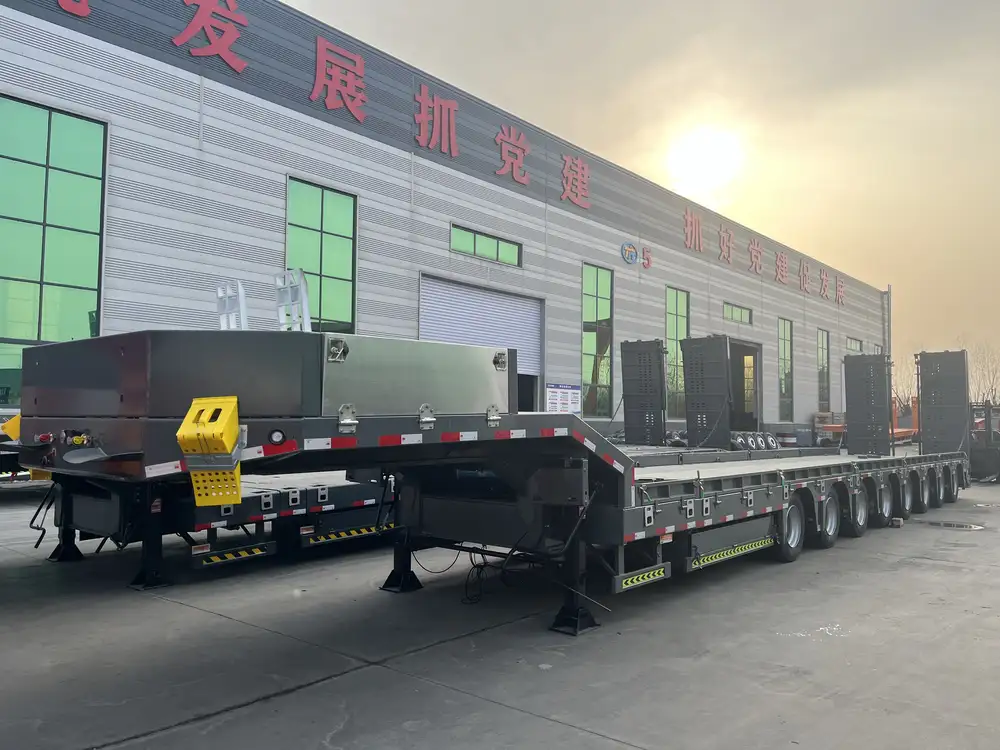When diving deep into the logistics and transportation realm, few topics arise as frequently as the dimensions of semi-trailers. Whether you’re a fleet operator, a logistics manager, or a curious entrepreneur, understanding what constitutes the average length of a semi-trailer is imperative. This knowledge not only aids in compliance with regulations but also helps in optimizing routes and managing payload efficiencies.
The Basics of Semi-Trailer Dimensions
Standard Lengths
The length of a semi-trailer can vary significantly based on various factors, including the type of cargo it’s designed to transport, regional legislation, and manufacturing specifications. The Federal Highway Administration (FHWA) regulates the maximum lengths of trucks and trailers, particularly for interstate highways. Here’s a concise breakdown:
| Type of Semi-Trailer | Typical Length |
|---|---|
| Standard Dry Van | 53 feet |
| Flatbed Trailers | 48 to 53 feet |
| Reefer Trailers (Refrigerated) | 53 feet |
| Step Deck Trailers | 48 to 53 feet |
| Tankers | 38 to 53 feet |
| Lowboy Trailers | 48 to 53 feet |

Variations to Consider
The average semi-trailer length is predominantly 53 feet, but variances exist based on specific operational needs:
- Dry Van Trailers: The most common type, typically spanning 53 feet, making them ideal for transporting a wide range of goods.
- Flatbed Trailers: Employed for heavy equipment and freight that cannot be accommodated within the confines of a standard trailer. Their varied lengths, usually between 48 and 53 feet, provide flexibility in load size.
- Refrigerated Trailers: Used for temperature-sensitive goods. The majority are 53 feet but can be shorter depending on the type of cargo.
The Evolution of Trailer Length Regulations
Various factors have contributed to the evolution of trailer lengths, especially in the United States, where regulations have changed in response to safety concerns and industry demands.
Historical Context
- Early Regulations: Initially, restrictions on trailer lengths were not strictly enforced, leading to unsafe practices.
- Introduction of the 53-Foot Standard: By the 1990s, the 53-foot trailer became the norm. This standardization was driven by the need to balance road safety and cargo capacity.

State-Specific Regulations
It’s essential to note that while federal regulations set the groundwork, individual states may impose differing restrictions. For example:
- California stipulates trailer lengths that can vary based on the type of vehicle combination.
- Texas, with its vast and varied landscape, often allows for longer configurations, especially for agricultural transport.
The Impact of Trailer Size on Transportation Efficiency
Payload Capacity
The length of a semi-trailer directly influences its payload capacity. A longer trailer can typically carry more freight, but that also means navigating stricter regulations regarding weight distribution and road safety.
| Trailer Length | Potential Payload |
|---|---|
| 48 feet | Up to 45,000 pounds |
| 53 feet | Up to 45,000 – 52,000 pounds |

Route Optimization
Fleet managers must consider the average lengths of their semi-trailers for efficient route planning. Longer trailers may limit access to certain routes, especially in urban areas with tight corners or weight-restricted bridges.
Fuel Efficiency
While longer trailers can carry more cargo, they may also increase drag and decrease fuel efficiency. Balancing the length with aerodynamics plays a crucial role in overall operational costs.
Comparisons with International Standards

Global Differences
The length of semi-trailers is not uniform globally. Here’s a snapshot of how trailer lengths compare internationally:
| Country | Standard Trailer Length |
|---|---|
| United States | 53 feet |
| Canada | 53 feet |
| European Union | 13.6 meters (approximately 44.7 feet) |
Insights into European Regulations
In Europe, trailer lengths are generally shorter due to historical road and bridge structures. The European Union has allowed combinations up to 25.25 meters (82 feet) in certain contexts, promoting longer vehicle configurations while ensuring safety.
Addressing Common User Queries
When researching semi-trailer lengths, users often have specific questions that may not be readily addressed. Here are a few insights that might prove beneficial:

How Does Trailer Length Affect Insurance Costs?
Insurance premiums for commercial trucks can depend significantly on the trailer length. Longer trailers might incur higher costs due to the potential for greater damages and liability in case of accidents. Fleet operators are advised to consult with their insurance providers for tailored assessments based on specific cargo and operational needs.
What Are the Implications of Over-Length Trailers?
Operating trailers that exceed the average lengths can lead to significant challenges. These include:
- Legal Penalties: Fines for violating state or federal length regulations can be severe.
- Restricted Route Access: Many cities have limitations on which roads can accommodate longer trailers, potentially forcing detours that add time and fuel costs.
Are There Specific Considerations for Specialized Trailers?
Indeed, specialized trailers, such as those used for car transport or heavy machinery, might have differing lengths and regulations applicable to them, particularly for safety and stability during transit. For example:
- Car Haulers: Typically range from 48 to 53 feet but often require additional securement measures.
- Lowboys: Commonly used for machinery transport, and lengths may vary significantly based on the equipment being moved.

Future Trends in Semi-Trailer Lengths
Technological Innovations
Advancements in trucking technology may soon alter the landscape of trailer lengths. Enhanced materials could allow for lighter but sturdier trailers, enabling longer lengths without compromising safety or payload capacities.
Sustainability Movements
With the rise of sustainable shipping practices, trailer configurations might shift to optimize fuel efficiency and reduce carbon footprints. This could lead to a reevaluation of conventional lengths and designs.

Conclusion
Understanding the average length of a semi-trailer is crucial for anyone involved in the logistics and transportation industry. With the typical trailer measuring 53 feet, variations exist across different types designed to accommodate specific cargo often influenced by regulations, efficiency, and safety concerns. As industry standards continue to evolve, both fleet operators and truck manufacturers must remain vigilant in adapting to new requirements, technological advancements, and sustainability considerations. By thoroughly comprehending these dynamics, stakeholders can ensure they remain competitive while promoting safe and responsible transportation practices.
Through this detailed exploration, we aim to provide a comprehensive resource for readers, empowering them with the knowledge essential for navigating the complexities of semi-trailer dimensions and their broader implications in the logistics space.



